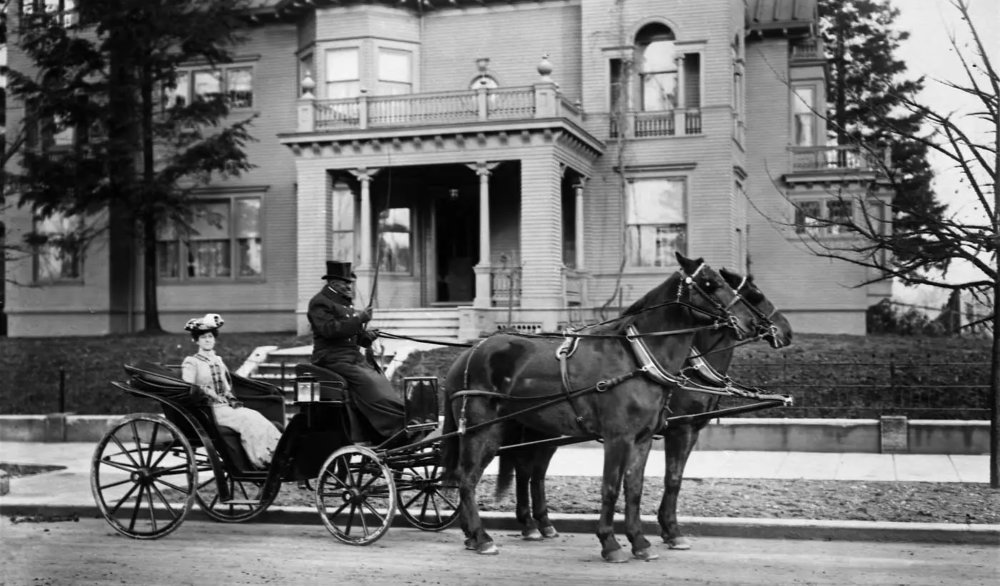A few local historians and old-timers remember the great mansions on Seattle’s aristocratic First Hill. One such gabled pile stood at the corner of Columbia and Minor, an area sometimes called “Pill Hill.” That particular architectural marvel was built by Alfred H. Anderson, who was a Shelton lumberman, former Mason County legislator, and husband to Wisconsin-bred Agnes Healy Anderson. Later, their former home served as a dormitory to nearby Seattle University.
Agnes and Alfred were social pillars of the Shelton, and later Seattle, elite. Alfred possessed a 7’8” bathtub, and was known for his impressive, impeccable taste and large appetite. For years Agnes proudly rode in her coachman-driven brougham drawn by horses named Lord and Lady – among the last residents to compete with the era of automobiles.
Agnes’s closest friend was Mae Riley. Mae was a women’s state tennis champion, and a devout Christian Scientist. Mae and Agnes were inseparable, Agnes acting as personal secretary and travelling companion to the Grand Dame in the brougham.
Agnes Healy Anderson read everything published by Mary Baker Eddy, founder of Christian Science, and she listened carefully to her devoted friend Mae Riley. Agnes and Mae believed that “the less medicine the better, until you arrive at no medicine.” Such a statement made perfect sense to Agnes who had been physically “delicate” as a girl.
During her lifetime Agnes reportedly gave $500,000 to Principia, a small Christian Science college near St. Louis, Missouri. Her Christian Scientist beliefs were firm, but she changed practitioners from time to time, complaining about their abilities or personalities.
With an estate of more than $12 million after her husband’s death, Agnes Healy Anderson was a focal point of philanthropy, both traditional and off-beat. Her largesse resulted in such high-profile projects as paying off Cornish School’s mortgage and underwriting the School of Forestry at the University of Washington. At her death she was described as “the largest individual stockholder of the Seattle First National Bank.”
Agnes’s 1940 will also revealed many other beneficiaries: the Shelton Public Library, Children’s Orthopedic Hospital, the YMCA, King County Humane Society, and Whitman College. She left $1,000 for her laundress, Ida Johnson of Suquamish. Other somewhat bizarre gifts included 70 large diamonds and 272 small precious stones listed in her estate inventory.
Agnes and Alfred Anderson were devoted to their adopted city. The entire clans of Healy and Anderson are buried side by side in Capitol Hill’s Lake View, one of Seattle’s two pioneer cemeteries.
Discover more from Post Alley
Subscribe to get the latest posts sent to your email.

Thanks again Junius for your ongoing wonderful historical comments and observations. And thanks to Post Alley for posting them to educate us about our history. Junius’ s knowledge of our local history coupled with his superb research capability are an invaluable asset and learning tool for all of us.